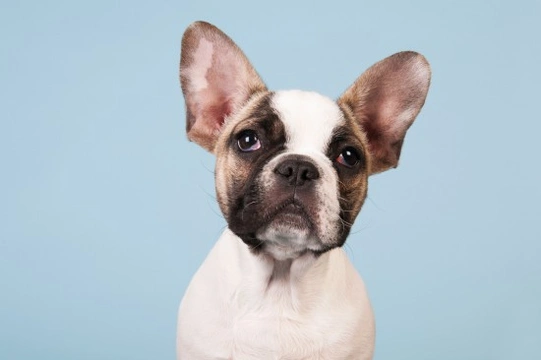
Some small brachycephalic dog breeds
Dogs that are said to be brachycephalic are dogs that have a short, squashed muzzle and shortened airways, such as is typical of the ubiquitous Pug dog and many other breeds. Lots of small dog breeds also possess this trait to some extent, which can pose problems for the dogs in hot weather or when undergoing strenuous exercise.
The normal muzzle of the dog is elongated with a protruding nose, which enables the dog in question to breathe deeply and get enough air to be able to support vigorous exercise and keep themselves cool. However, as the short, squashed muzzle appearance is considered by many to be desirable, it has been widely selectively bred for in companion dogs, and forms part of the breed standard for a significant number of breeds.
Even within dog breeds that have a brachycephalic muzzle written into the breed standard, the degree of shortness of the face should be monitored through selective breeding to ensure that it does not have a pronouncedly negative impact on the health of the dogs in question. The shorter and flatter the muzzle and the higher the position of the nose in relation to the eyes, the more likely it is that problems will arise with breathing and maintaining body temperature.
Dogs whose faces are overly flat and short compared to the breed standard are said to be ultra-typed or overtyped, and this is considered as a breed flaw in its own right.
In this article, we will look at some of the most popular small dog breeds that are also brachycephalic, and some of the problems that this can pose for affected dogs. Read on to learn more.
The Pug
The Pug dog is the most obvious and widely known of the small brachycephalic dog breeds, and is also over all the small dog that is most likely to suffer from problems due to the conformation of their faces. Short, round and with a tendency to pile on the pounds, the Pug should have careful attention paid to their diet and exercise to prevent them from running to fat, which can greatly exacerbate many of the problems associated with their short, flat faces.
The Pekingese
The Pekingese is an adorable little dog with long, silky hair and is the classical example of a lap dog or toy dog breed. They have very delicate, small faces that are often prone to overtyping, and potential Pekingese buyers should examine the faces of the puppies and the dam carefully to ensure that the degree of shortness of the muzzle is not likely to lead to later problems for the dog.
Their combination of long fur and small faces means that they are particularly prone to overheating during hot weather or vigorous exercise.
The Shih Tzu
The Shih Tzu is another classical example of a lap dog or toy dog, and one that requires a lot of attention! The length of the Shi Tzu’s muzzle can vary considerably between dogs, but generally, they are not one of the most flat-faced of the potentially brachycephalic breeds. They have incredibly long, thick fur which requires a significant amount of brushing and grooming every day, and which again, can lead to overheating in hot weather or when the dog is very active.
The French bulldog
The French bulldog is a small, rotund dog that is one of the more lively and active of the companion dog breeds, and also one that is very prone to having an overly shortened muzzle. This is one breed to look out for in particular when it comes to carefully choosing a puppy whose face is not overly short. The French bulldog has a short coat and does not require a lot of grooming to keep them in good condition, but due to their short faces and lively natures, they are still very much at risk of overheating in hot weather.
The Affenpinscher
The Affenpinscher is a rather comical looking little dog, with wild black wavy fur and their unusual short, squished faces. They are incredibly appealing thanks to their uncommon appearance and sweet, fun-loving personalities, but their brachycephalic faces can cause a range of problems for the dog. They are also liable to suffer from eye ulcers due to the protrusion of their eyes, but aside from these problems, tend to be robust, healthy and long lived little dogs.
Cavalier King Charles spaniel
The delicate, tiny and cute Cavalier King Charles spaniel is a soft, gentle and loving breed, but one that can fairly be described as rather fragile. As well as sometimes being bred with faces that are too short to maintain healthy breathing and temperature, progressive attempts to breed dogs with ever smaller heads mean that the breed is sometimes afflicted with a painful condition called syringomelia, which occurs when the skull is literally too small to comfortably contain the size of the dog’s brain.
Great care should be taken to assess the breed line and health of the breed when selecting a Cavalier King Charles spaniel puppy.



